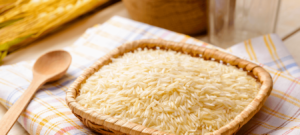Why is basmati rice becoming more popular than other types of rice?
We Indians have a deep passion for rice, which is our primary source of nourishment, and we take great delight in savoring earthy, aromatic rice dishes. Basmati Rice is a staple food in many countries worldwide, from South America to Southeast Asia, and it serves as the backbone of our agricultural economy. Many people are now saying that rice is bad for you because of its high glycemic index, leading to weight gain and elevated blood sugar levels. A high-carbohydrate diet has been linked to various diseases among Asian populations, but this is not the case in the United States.
Our country contains at least a hundred different rice varieties, which have evolved during the past three decades. Sonamasoori and Ponni are popular rice varieties in South India, but the Keralites prefer hand-pounded rice. In terms of cooking unique rice dishes like Biryani, Pulao, and so on, Basmati is our best bet because it not only enhances the dish’s aromatic flavor but also makes each mouthful tasty, nutritious, and utterly satisfying.
Indian subcontinent Basmati rice is a particular type of rice that has been around for centuries. Long, thin-grained, and aromatic, it comes in white and brown varieties. Precooked milled rice with a minimum average length of 6.1 millimeters and a maximum breadth of 2 millimeters, as defined by the Indian government agency APEDA, can be labeled as Basmati rice.

Basmati rice’s origin
Rice is one of the world’s most commonly used ingredients. As for basmati rice, it’s a popular choice for several reasons, including its delicate texture and fragrant aroma. Isn’t that what it says on the tin? The word “basmati” means “fragrant” in the Indian language. Thus, this is correct.
Indian, Nepalese, and Pakistani rice is the origin of this sort of rice. It is typical for basmati rice to be grown near the foothills of the Himalayas. However, several brands of basmati rice are also produced in the United States.

The following are just a few reasons why Basmati rice is superior to regular rice and why you should use it instead:
Basmati Rice is a ‘Super grain
rice is gluten-free and low in fat. It is rich in all eight of the body’s essential amino acids and folic acid and has a low sodium content and no cholesterol. Having a low to medium glycemic index, Basmati provides a steady energy flow, resulting in an overall feeling of well-being.

The Flavours of Basmati Rice Will Take Your Taste Buds by Storm
The flavor of basmati rice is unparalleled by any other type of rice. Basmati‘s long, slender grains have a distinct, unique, and somewhat nutty flavor, making it an excellent choice for dishes that call for a particular type of rice.
ArTheoma of Basmati Is Spectacular.
It has been likened to the aroma of sun-baked wood and flowers, which is why it is known as Basmati.
Basmati Rice’s Health Benefits:
Despite its high calorie and carbohydrate content, Basmati rice provides a wide range of vital nutrients and dietary fiber that slows down digestion. Basmati rice is a good choice for people with diabetes since it reduces blood sugar rises. A lower glycaemic index is essential for those with diabetes, according to the Diabetic Association of Canada, which recommends basmati rice. The high amount of fiber, amylase, and protein in basmati rice contributes to its low glycaemic index, which helps regulate blood sugar levels.
Maintaining a Healthy Heart
Because it is low in sodium and saturated fat, basmati rice is ideal for people with heart disease. The high quantities of dietary fiber and vitamin B support improving HDL (good) cholesterol levels and reducing LDL (bad) cholesterol. A fatty build-up in the heart arteries is prevented, which improves cardiac muscle performance and heart health.
Prevents Cancer.
Foods rich in fiber, such as basmati rice, can halt the formation of malignant cells by 20% more than other types of cereals. Diets high in fiber content can help regulate the digestive system, increase fecal volume, and ease the transit of food and other items through the digestive tract. Breast cancer can be prevented by consuming whole-grain brown basmati rice, as the fibers aid the body in maintaining hormonal equilibrium.
Maintains a healthy weight
Many people believe that a diet heavy in rice is the greatest threat to their efforts to slim down. On the other hand, the research suggests that basmati rice can significantly aid in the reduction of body fat. Slowing down digestion, keeping you full for more extended periods, and controlling undesirable food cravings are all benefits of a diet high in natural dietary fiber. In addition, it has a high concentration of amylose, a type of carbohydrate that is difficult for the body to break down, resulting in faster weight loss.
Inhibits Hypertension
Basmati rice is an excellent source of magnesium and potassium, which lowers blood pressure significantly. Improved circulation and blood flow to all of the body’s vital organs can be attributed to potassium. People with high blood pressure can considerably benefit from eating basmati rice regularly.
A catalyst for digestion
Since Basmati is high in soluble fiber, it contributes to a healthy digestive tract by providing an abundance of roughage. Constipation can be avoided by eating a diet high in fiber, which helps waste flow through the intestines more easily. Constipation and other digestive issues can be considerably alleviated by eating basmati rice regularly.
Conclusion:
Rice that has a nutty flavor and a deep scent are known as Basmati. It contains less arsenic than other rice types. Vitamins and minerals are plentiful in basmati rice, making it a nutritious choice. Savory and sweet cuisines can be made with basmati rice in both white and brown types. Basmati rice has a low glycaemic index and a high dietary fiber content, making it an excellent choice for people with diabetes and those who want to lose weight. Basmati rice can be enjoyed in moderation; brown rice, on the other hand, can help you maintain healthy body weight.
Also Read :
